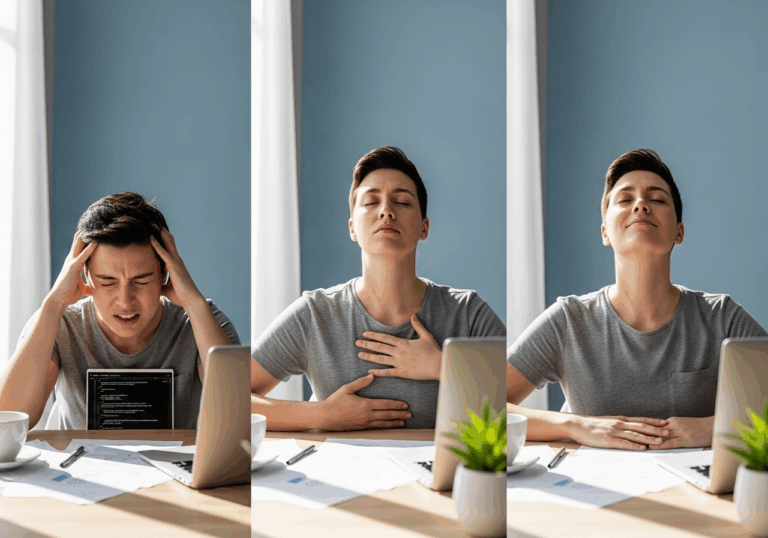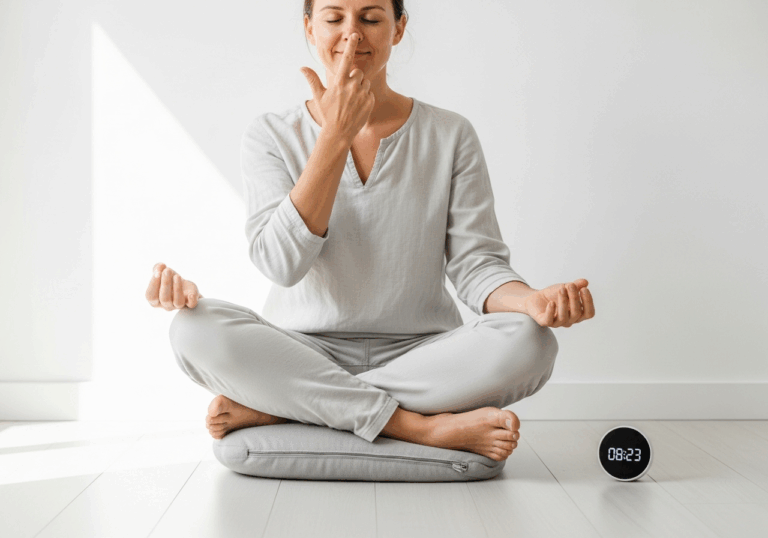Science-Backed Tips
Transform PTSD Symptoms with HRVB Practice
Daily HRVB practice reduces PTSD symptoms by ~40% in 4 weeks.
📊 Did you know?
💡 Why It Matters
1️⃣
A 40% reduction in PTSD symptoms can significantly improve daily functioning and quality of life.
2️⃣
Improved HRV coherence is linked to better emotional regulation and resilience against stress.
3️⃣
HRVB can be a cost-effective intervention for mental health treatment, reducing the need for medication.
✅ Try These Micro-Tips
🎯
Practice HRVB for 20 minutes daily to enhance emotional regulation.
🎯
Incorporate deep breathing exercises during HRVB sessions for better results.
🎯
Track your PTSD symptoms weekly to monitor progress and adjust practices as needed.
🎯
Consider joining a support group to enhance motivation and accountability in your HRVB practice.
📚 The study
The objective was clear: to assess the potential of HRVB in alleviating PTSD symptoms. Over the course of four weeks, participants engaged in daily HRVB sessions, resulting in a remarkable ~40% reduction in their symptom scores.
Additionally, improvements in HRV coherence were observed, indicating enhanced emotional regulation and resilience against stress.
This is significant because a 40% drop in PTSD symptoms can dramatically enhance an individual’s daily functioning and overall quality of life.
The findings suggest that HRVB not only aids in mood restoration following trauma but also offers a cost-effective intervention for mental health treatment, potentially reducing the reliance on medication.
As we continue to seek innovative solutions for mental health challenges, HRVB stands out as a promising approach that harnesses the power of autonomic regulation to foster healing and recovery.
This study paves the way for further research and highlights the importance of integrating such techniques into therapeutic practices for those affected by trauma.
❓ Frequently Asked Questions ❓
Learn more
What is HRVB and how does it relate to PTSD?
HRVB stands for Heart Rate Variability Biofeedback, a technique that helps individuals regulate their heart rate and improve emotional responses. It has been shown to significantly reduce PTSD symptoms and enhance overall well-being through autonomic regulation.
How much can HRVB reduce PTSD symptoms?
Daily HRVB practice over four weeks can lead to a reduction of approximately 40% in PTSD symptoms. This significant decrease can greatly enhance daily functioning and quality of life for individuals affected by trauma.
What are the benefits of improved HRV coherence?
Improved HRV coherence is associated with better emotional regulation and increased resilience against stress. This enhancement can contribute to mood restoration following traumatic experiences.
How long should I practice HRVB each day?
It is recommended to practice HRVB for 20 minutes daily to achieve optimal results. Consistent practice can lead to better emotional regulation and symptom relief.
Can HRVB be a substitute for medication?
HRVB can serve as a cost-effective intervention for mental health treatment, potentially reducing the need for medication. However, it is important to consult with a healthcare professional before making any changes to treatment plans.
What techniques can enhance my HRVB practice?
Incorporating deep breathing exercises during HRVB sessions can lead to better results. These techniques help facilitate relaxation and improve the effectiveness of the practice.
How can I track my progress with PTSD symptoms?
Tracking your PTSD symptoms weekly can help you monitor progress and adjust your HRVB practices as needed. This self-assessment can provide valuable insights into your emotional state and treatment effectiveness.
Is it beneficial to join a support group while practicing HRVB?
Joining a support group can enhance motivation and accountability in your HRVB practice. Sharing experiences with others can provide additional emotional support and encouragement.
What is the significance of the 40% reduction in PTSD symptoms?
A 40% reduction in PTSD symptoms can significantly improve an individual’s daily functioning and overall quality of life. This level of improvement can lead to better relationships, work performance, and emotional health.
How does HRVB support mood restoration after trauma?
HRVB supports mood restoration by promoting autonomic regulation, which helps individuals manage stress and emotional responses. This practice can lead to a more balanced emotional state and improved mental health outcomes.





